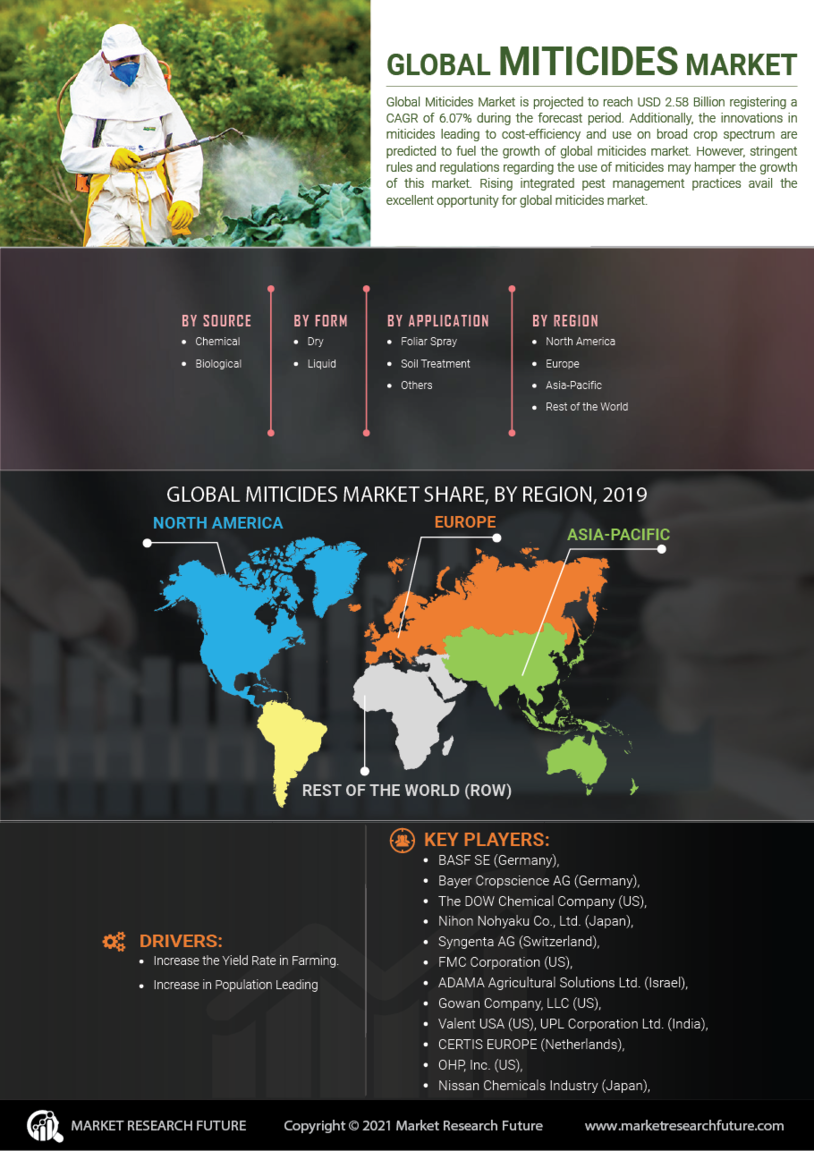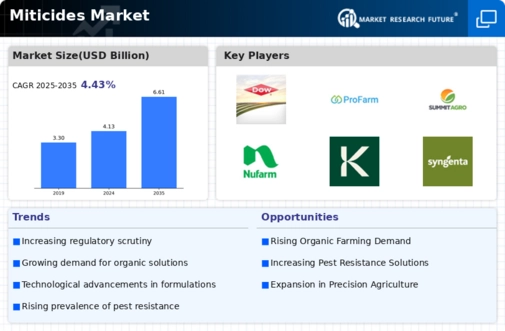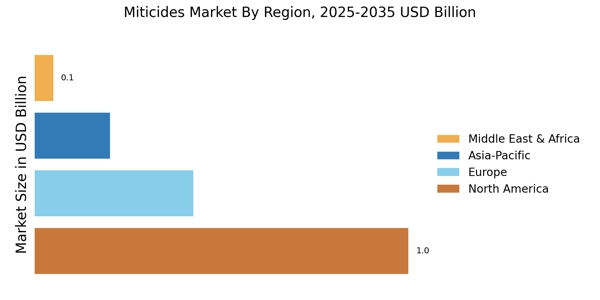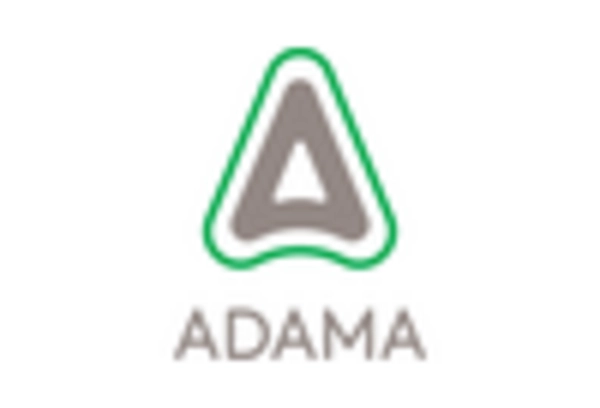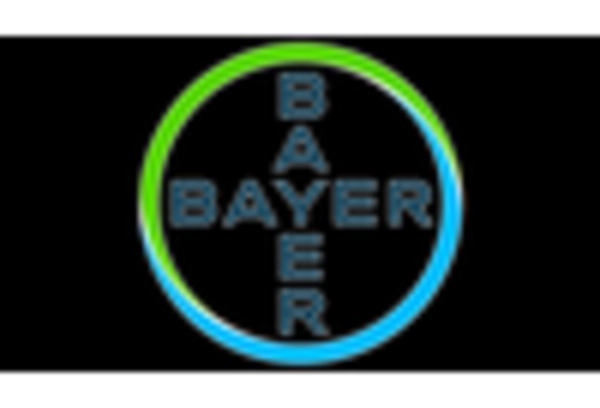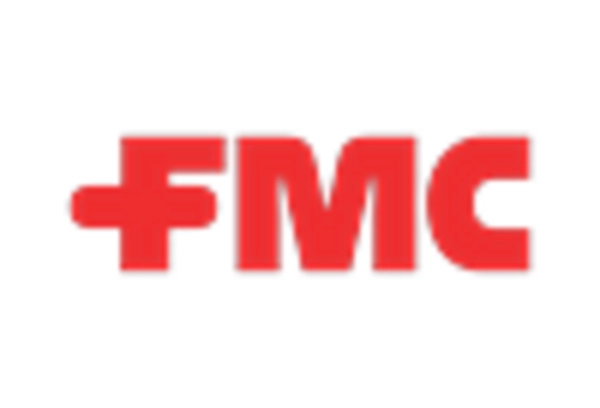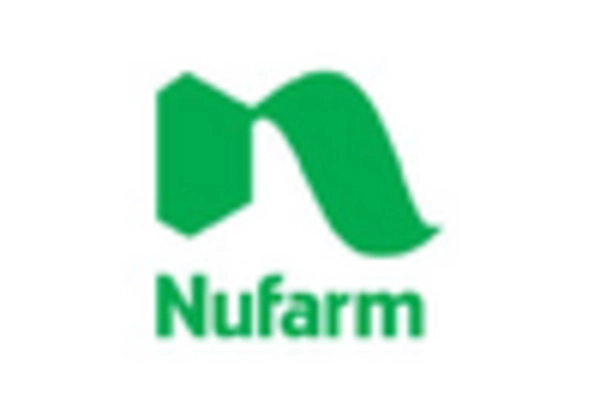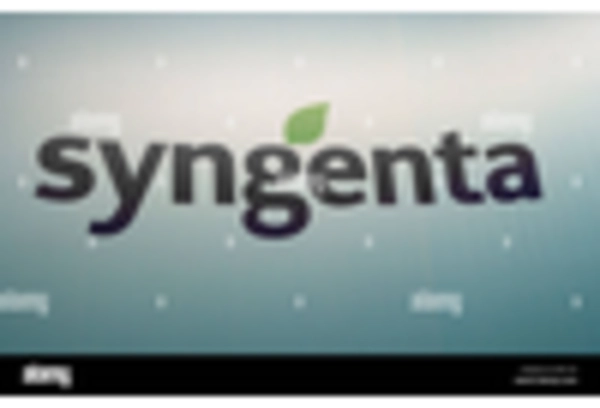Increasing Pest Resistance
The rising incidence of pest resistance is a critical driver in the Miticides Market. As pests evolve and develop resistance to conventional pesticides, the demand for effective miticides increases. This trend is particularly evident in crops such as cotton and soybeans, where pest resistance has led to significant yield losses. According to recent agricultural reports, the economic impact of pest resistance could reach billions annually, prompting farmers to seek advanced miticide solutions. Consequently, manufacturers are investing in research and development to create innovative products that can effectively combat resistant pest populations. This ongoing challenge in pest management is likely to sustain growth in the Miticides Market, as stakeholders prioritize effective solutions to protect their crops and ensure agricultural productivity.
Growing Awareness of Crop Health
The heightened awareness of crop health and its impact on food security is a significant driver in the Miticides Market. As global populations continue to rise, the need for increased agricultural productivity becomes paramount. Farmers are increasingly recognizing the importance of managing pest populations to maintain crop health and maximize yields. This awareness is leading to a greater investment in pest management solutions, including miticides. Reports indicate that effective pest control can enhance crop yields by up to 30%, underscoring the critical role of miticides in modern agriculture. As stakeholders prioritize crop health to ensure food security, the Miticides Market is likely to see sustained growth, driven by the demand for effective pest management solutions that support agricultural sustainability.
Rising Demand for Organic Farming
The growing consumer preference for organic produce is reshaping the Miticides Market. As more farmers transition to organic farming practices, the need for organic-approved miticides is becoming increasingly pronounced. The organic farming sector has witnessed substantial growth, with a reported increase in organic farmland by over 10% in recent years. This shift necessitates the development of miticides that comply with organic standards, thereby creating opportunities for manufacturers to innovate and expand their product lines. The demand for organic miticides is expected to rise as consumers continue to prioritize health and sustainability, further driving the Miticides Market. This trend not only supports environmental sustainability but also aligns with the increasing regulatory pressures for reduced chemical usage in agriculture.
Technological Innovations in Agriculture
Technological advancements are significantly influencing the Miticides Market. The integration of precision agriculture technologies, such as drones and remote sensing, allows for more targeted application of miticides, enhancing their effectiveness and reducing waste. These innovations enable farmers to monitor pest populations in real-time, leading to more informed decision-making regarding miticide application. Furthermore, the adoption of smart farming practices is projected to increase the efficiency of miticide usage, potentially reducing costs for farmers. As the agricultural sector embraces these technologies, the Miticides Market is likely to experience growth driven by the demand for more efficient and sustainable pest management solutions. The ongoing development of smart agricultural tools is expected to create new avenues for miticide manufacturers to explore.
Regulatory Pressures for Sustainable Practices
Regulatory changes aimed at promoting sustainable agricultural practices are shaping the Miticides Market. Governments worldwide are implementing stricter regulations on pesticide usage, encouraging the adoption of environmentally friendly alternatives. This regulatory landscape is pushing manufacturers to innovate and develop miticides that are not only effective but also compliant with new environmental standards. The increasing focus on sustainability is likely to drive demand for biopesticides and other eco-friendly miticide options. As regulations evolve, the Miticides Market must adapt to meet these new requirements, potentially leading to a shift in product offerings and market dynamics. This regulatory pressure may also foster collaboration between stakeholders to develop solutions that align with both agricultural productivity and environmental stewardship.
